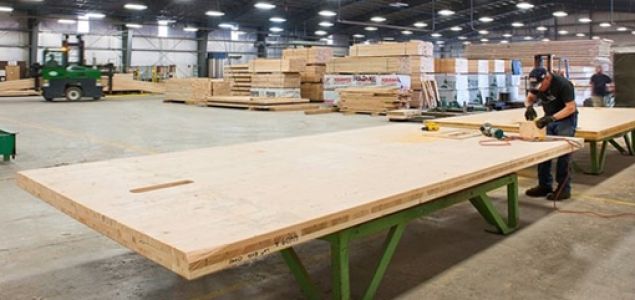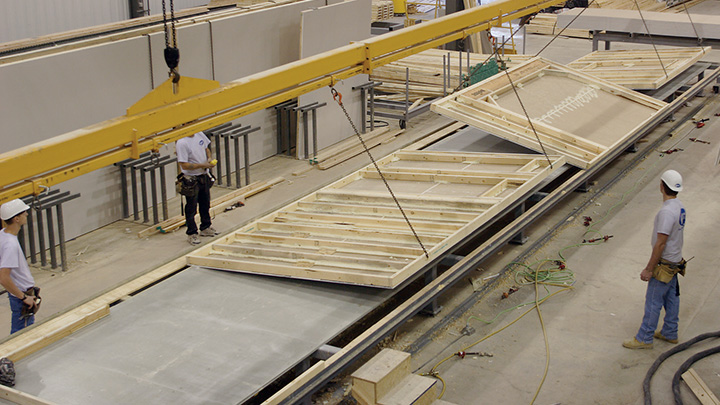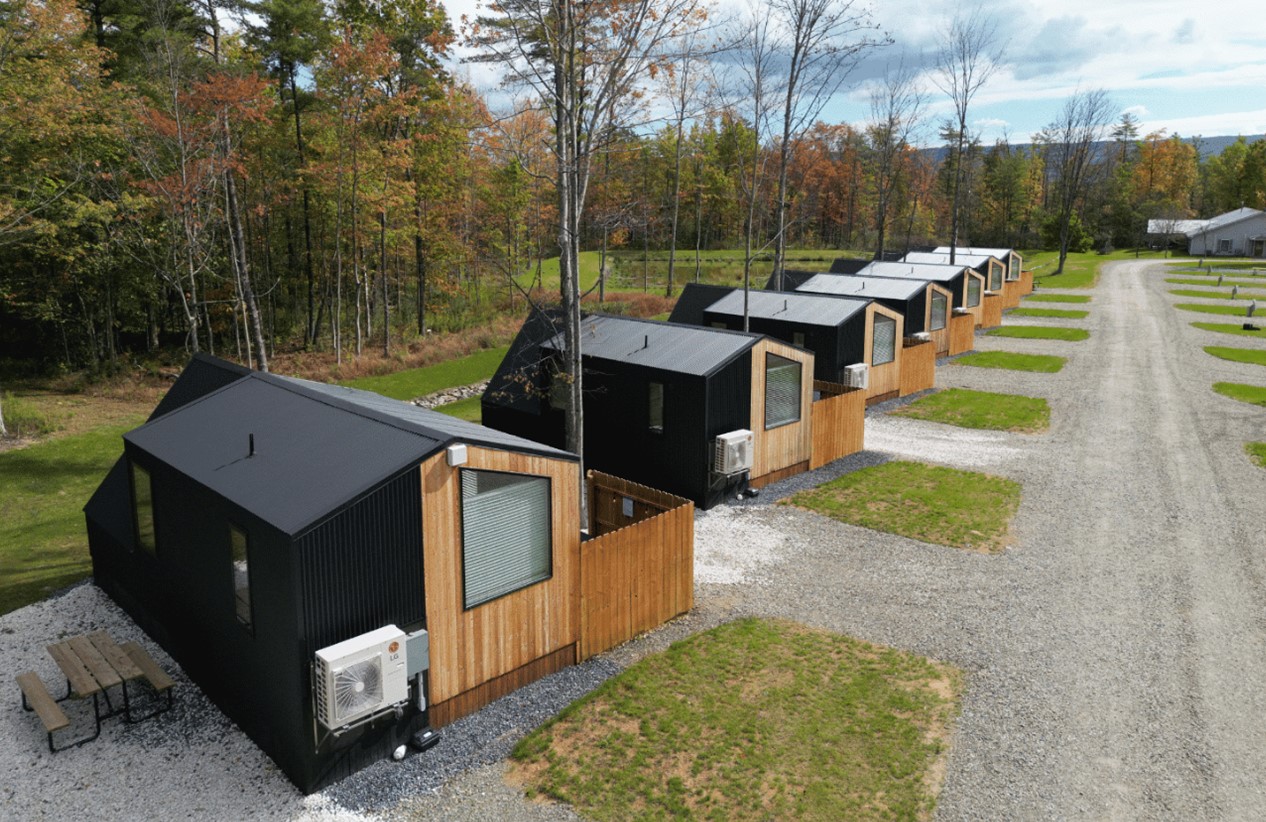As the world races to address climate change and the housing crisis simultaneously, an old material is emerging as a modern solution: timber. Long used in construction, timber is now at the forefront of innovative building technologies aimed at achieving net-zero housing. This shift represents not just a return to nature but a revolution in how homes are designed, constructed, and lived in, making timber one of the most promising paths toward a sustainable future.

.
The Carbon Footprint of Traditional Materials
One of the biggest challenges facing the construction industry is the carbon footprint of traditional building materials. Concrete and steel, the backbone of modern construction, are responsible for nearly 40 percent of global carbon emissions. Timber, particularly engineered products like Cross-Laminated Timber (CLT), Glulam, and Laminated Veneer Lumber (LVL), provides a viable alternative by offering the strength of steel and the sustainability of a renewable resource. Unlike concrete and steel, which generate carbon emissions during their production, timber actively removes carbon dioxide from the atmosphere during its growth, locking it away for decades or even centuries when used in buildings. This ability to sequester carbon makes timber a game-changer in the quest for net-zero housing.

.
Lower Embodied Energy and Improved Efficiency
Another advantage of timber is its lower embodied energy compared to other building materials. The process of harvesting, processing, and transporting wood requires significantly less energy than manufacturing steel or concrete. This energy efficiency translates into a reduced environmental impact, making timber a crucial material in reducing the carbon footprint of new housing developments. Additionally, timber’s natural thermal insulation properties help improve energy efficiency, reducing heating and cooling demands. When paired with high-performance insulation, such as wood-fiber panels, Structural Insulated Panels (SIPs), or hempcrete, timber-framed homes can reach Passive House standards, significantly lowering their reliance on external energy sources.

.
Offsite Construction and Modular Innovation
Timber’s versatility extends beyond its sustainability benefits. It is ideally suited for offsite modular and panelized construction, an innovative approach that is revolutionizing the housing industry. Offsite manufacturing allows entire sections of homes to be built in a controlled environment before being transported and assembled on-site, reducing material waste, labor costs, and construction time. Timber-based modular systems, with their precision engineering and lightweight properties, make it possible to construct airtight, energy-efficient homes with minimal environmental disruption. The combination of timber and offsite construction is proving to be a winning formula in delivering high-quality, affordable, and sustainable housing solutions.
Addressing Fire Safety and Durability Concerns
Despite its many advantages, timber does face challenges that must be addressed to maximize its potential in net-zero housing. One of the most frequently raised concerns is fire safety. While mass timber products like CLT have demonstrated impressive fire resistance due to their ability to form a protective char layer, some building codes still limit their use, particularly in high-rise structures. Advances in fire testing and updated regulations are gradually overcoming these barriers, paving the way for wider adoption of timber in urban and multi-story construction.
Moisture and durability concerns are also considerations in timber construction. Wood is susceptible to rot, mold, and warping if not properly protected. However, modern treatments, coatings, and careful design strategies are helping to mitigate these risks, making timber as durable as, if not more than, traditional materials in many applications. As more builders and developers gain experience with mass timber, best practices continue to evolve, ensuring long-term performance and resilience.
Cost and Supply Chain Limitations
Another challenge lies in the availability and cost of engineered timber products. While interest in CLT and Glulam has surged, production capacity remains limited compared to traditional materials. This scarcity can drive up costs, making mass timber structures more expensive than their concrete and steel counterparts in certain markets. However, as demand grows and production scales up, costs are expected to decrease, making timber an even more attractive option for net-zero housing projects.
Timber as Part of a Holistic Approach to Net-Zero
Timber alone, however, is not a silver bullet. Achieving true net-zero housing requires a holistic approach that integrates energy-efficient design, renewable energy systems, and smart technology. Solar panels, advanced HVAC and ventilation systems, and smart building automation must complement timber’s inherent sustainability benefits. When combined, these elements create homes that not only reduce emissions during construction but also operate efficiently throughout their lifespan, minimizing energy consumption and reliance on fossil fuels.
The Future of Timber in Net-Zero Housing
The growing adoption of timber in net-zero housing reflects a broader shift in the construction industry toward innovation and sustainability. Governments, architects, and developers are recognizing the urgent need for carbon-neutral building solutions, and timber is playing a leading role in this transformation. Countries like Canada, Sweden, and Germany have already embraced mass timber construction in residential and commercial projects, setting an example for the rest of the world. In the United States, increasing incentives for sustainable building practices are encouraging developers to explore timber’s potential as a primary material for net-zero homes.
As the construction industry evolves, timber’s role will continue to expand, driven by advancements in technology, improved regulations, and a growing awareness of its environmental benefits. From single-family homes to multi-story apartment buildings, timber is proving to be an essential component of the future of housing. While it may not be the sole answer to net-zero living, it is undoubtedly one of the most promising innovations in sustainable construction, offering a pathway to a greener, healthier, and more resilient built environment.
.

Gary Fleisher
Gary Fleisher is the Leading Observer of the Offsite Housing Construction Industries. He has been actively involved in researching and writing about the latest trends and developments in the industry for over a decade now.
With his extensive knowledge and experience, Gary has emerged as a go-to expert for businesses looking to stay ahead of the curve in the modular construction industry. In addition to his work as an editor, he is also a sought-after speaker and consultant who has helped numerous companies achieve strategic and operational success.












